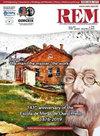风荷载对钢结构影响的随机方法
Q3 Earth and Planetary Sciences
引用次数: 4
摘要
巴西设计荷载标准仍然提供了1977年开发的风速图。从那时起,收集了新的数据,并在文献中提出了新的图表。文献不仅警告了短期阵风模式的变化,而且还警告说风速值比过去观测到的要高。许多研究人员认为,这些差异与气候变化的影响有关。除了气候变化对地球物理和社会的影响外,设计师们还普遍关注高风速对结构设计的影响。本文旨在分析风速作为一个随机变量,在风速发生变化时对钢结构设计的影响。采用随机方法对某钢梁柱的期望应力值进行了求解。对40层钢框架进行了蒙特卡罗分析,比较了不同风速情景和分析类型的影响。在分析中,风速采用甘贝尔分布,并生成未来风情景进行敏感性评估。解析分析和蒙特卡罗分析表明,应更多地注意使用平均风速值而不是概率分布函数的后果。本文章由计算机程序翻译,如有差异,请以英文原文为准。
A stochastic approach for the wind load effect on steel structures
The Brazilian design load standard still provides a wind speed map developed in 1977. Since then, new data have been collected and new charts have been proposed in literature. The literature not only alerts to changes in short-term wind gust patterns, but it also warns that the wind speed values are higher than observed in the past. Many researchers have suggested that these differences are correlated to climate change effects. Besides the geophysical and societal impacts of climate change, there is a general concern between designers on the impacts of higher wind speeds on structural design. This paper aims to analyze the wind speed as a stochastic variable and its influence on the design of steel structures when changes in wind speed occur. A stochastic approach is used to evaluate expected stress values for a steel beam-column example. A Monte Carlo analysis is performed on a forty-story steel frame to compare the impact of different wind speed scenarios and types of analysis. In the analyses, the wind speed is approached by a Gumbel distribution and future wind scenarios are generated for sensitiveness evaluation. The analytical and Monte Carlo analyses indicate that greater attention shall be given to the consequences of using an average wind speed value instead of a probability distribution function.
求助全文
通过发布文献求助,成功后即可免费获取论文全文。
去求助
来源期刊

Rem-Revista Escola De Minas
工程技术-工程:土木
自引率
0.00%
发文量
0
审稿时长
6-12 weeks
期刊介绍:
REM – International Engineering Journal (antigua REM – Revista Escola de Minas) es la primera revista técnica de Sudamérica. Fue fundada en enero de 1936 por los estudiantes de la Escuela de Minas de Ouro Preto y desde entonces se ha especializado en la publicación de artículos en las áreas de la Ingeniería Civil, Geología, Metalurgia y Materiales y, Minería y Mecánica y Energía.
Su objetivo es servir como un medio de publicación para los trabajos técnicos y científicos originales de investigadores nacionales y extranjeros en esas áreas. Contribuciones originales (artículos y cartas) son aceptadas. Artículos de revisión dependen de la invitación y/o análisis de los Editores.
El envío de artículos para su publicación implica que el trabajo no ha sido publicado previamente, que no está siendo presentado para su publicación en otra revista y no se publicará en otro lugar, en la misma forma, sin el permiso, por escrito, de los Editores/Autores.
 求助内容:
求助内容: 应助结果提醒方式:
应助结果提醒方式:


